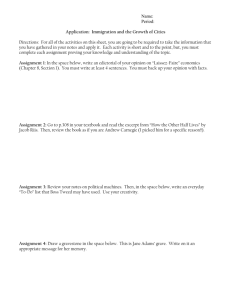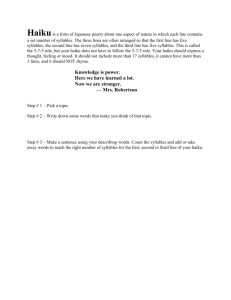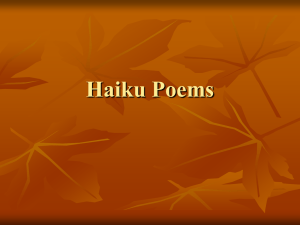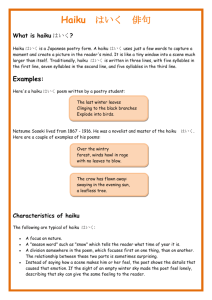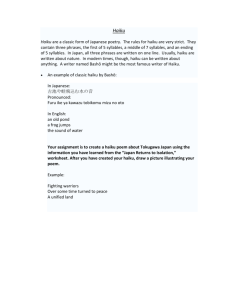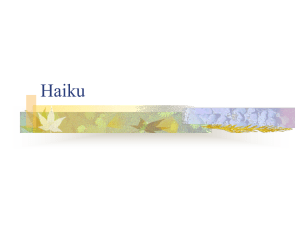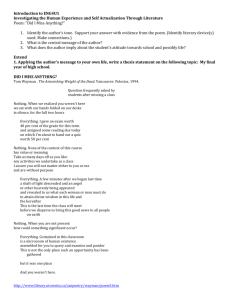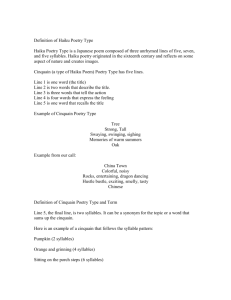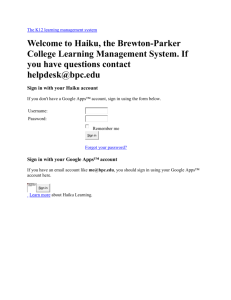1 If you can count syllables, you can write a haiku
advertisement
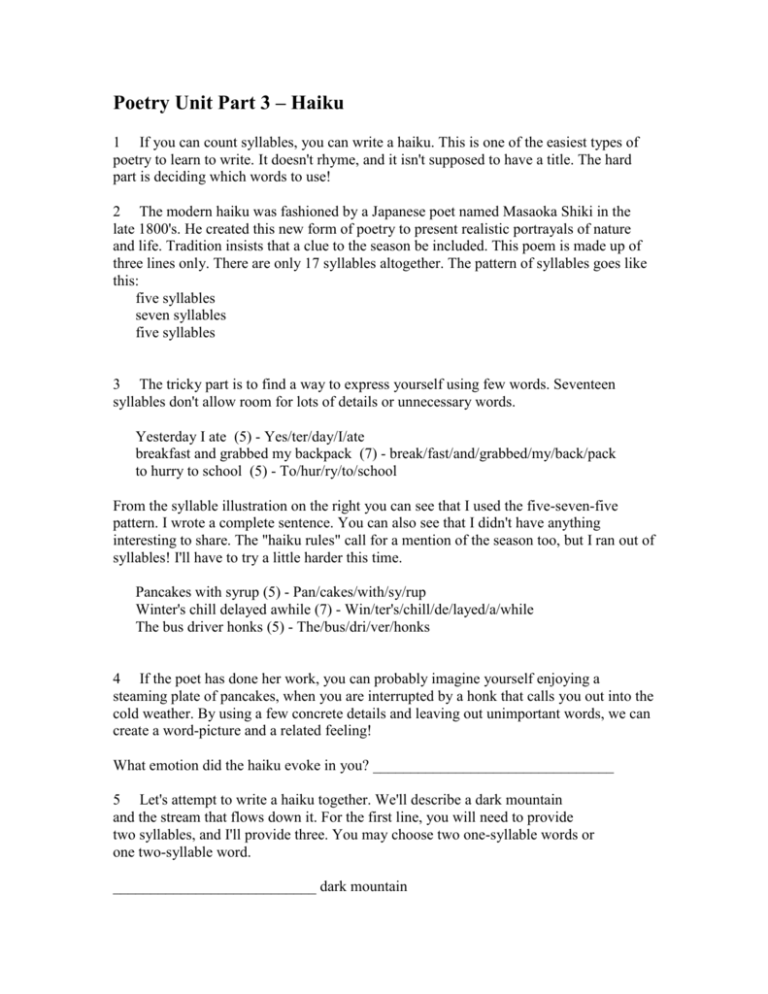
Poetry Unit Part 3 – Haiku 1 If you can count syllables, you can write a haiku. This is one of the easiest types of poetry to learn to write. It doesn't rhyme, and it isn't supposed to have a title. The hard part is deciding which words to use! 2 The modern haiku was fashioned by a Japanese poet named Masaoka Shiki in the late 1800's. He created this new form of poetry to present realistic portrayals of nature and life. Tradition insists that a clue to the season be included. This poem is made up of three lines only. There are only 17 syllables altogether. The pattern of syllables goes like this: five syllables seven syllables five syllables 3 The tricky part is to find a way to express yourself using few words. Seventeen syllables don't allow room for lots of details or unnecessary words. Yesterday I ate (5) - Yes/ter/day/I/ate breakfast and grabbed my backpack (7) - break/fast/and/grabbed/my/back/pack to hurry to school (5) - To/hur/ry/to/school From the syllable illustration on the right you can see that I used the five-seven-five pattern. I wrote a complete sentence. You can also see that I didn't have anything interesting to share. The "haiku rules" call for a mention of the season too, but I ran out of syllables! I'll have to try a little harder this time. Pancakes with syrup (5) - Pan/cakes/with/sy/rup Winter's chill delayed awhile (7) - Win/ter's/chill/de/layed/a/while The bus driver honks (5) - The/bus/dri/ver/honks 4 If the poet has done her work, you can probably imagine yourself enjoying a steaming plate of pancakes, when you are interrupted by a honk that calls you out into the cold weather. By using a few concrete details and leaving out unimportant words, we can create a word-picture and a related feeling! What emotion did the haiku evoke in you? ________________________________ 5 Let's attempt to write a haiku together. We'll describe a dark mountain and the stream that flows down it. For the first line, you will need to provide two syllables, and I'll provide three. You may choose two one-syllable words or one two-syllable word. ___________________________ dark mountain 6 For the second line, I'll supply the first four syllables, leaving you to supply three more. Be sure to include a verb and an adverb, and don't go over three syllables! Rushing waters _____________________________(verb + adverb) Over muscled rocks. 7 Look at the last line. Rocks don't have muscles; however, when teaming those two words together, I imagine big, strong, powerful rocks that the water's great force cannot move. 8 Rewrite the completed haiku here: 9 Now you are ready to write a haiku on your own. Choose either your most favorite or least favorite season. Then choose an object that represents that like or dislike. Include both the season and related object in your haiku. Try to evoke the same emotional response in your reader that those things make you feel. Remember to use the 5-7-5 pattern of syllables! 10 Write one more haiku on a clean piece of paper. Share it with a friend and discuss why you wrote it. Two Haiku poems are required for Part 3 of the Poetry Portfolio. One Haiku must be accompanied by a brief explanation of how the words were chosen to convey the meaning.
